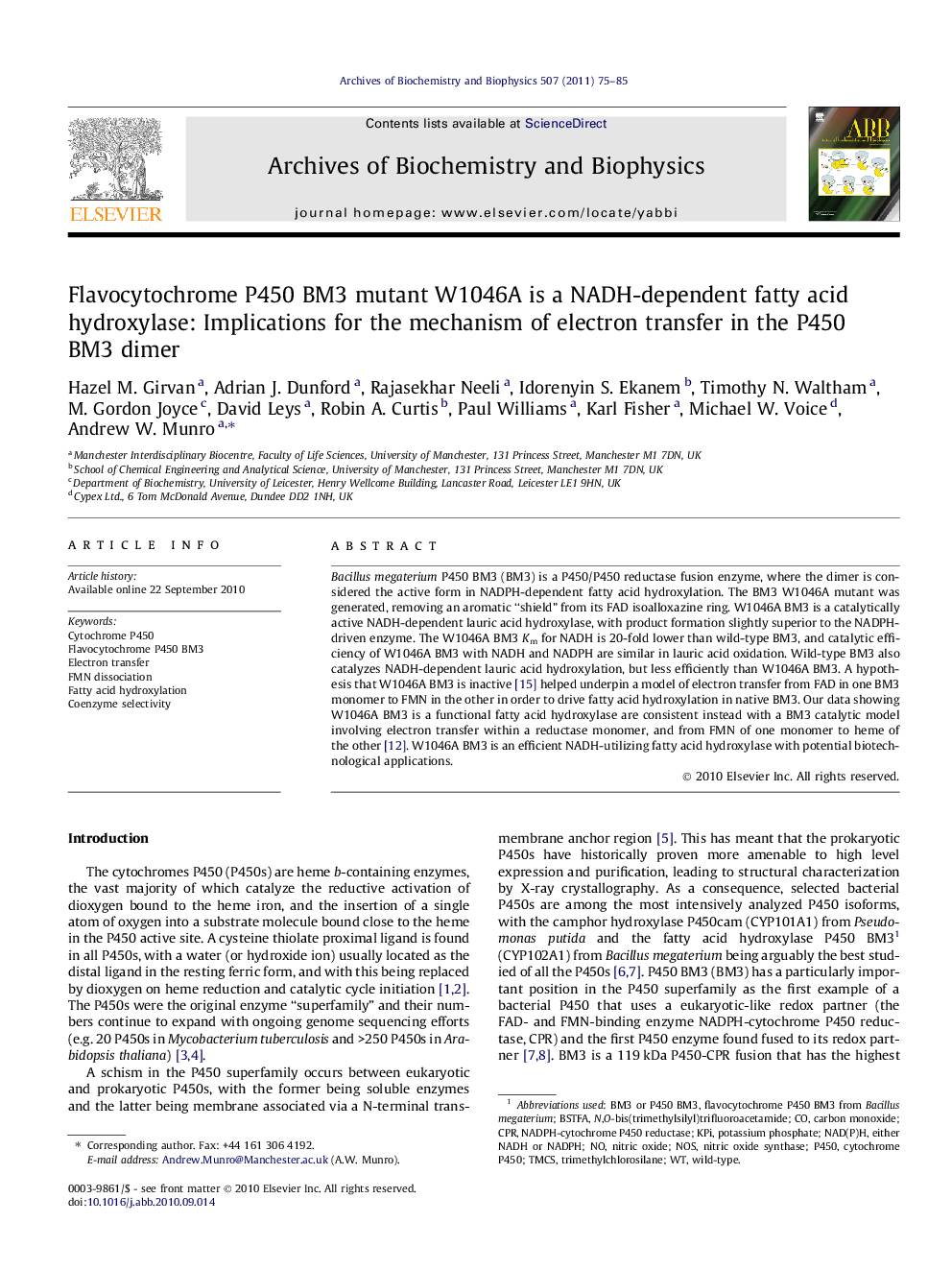| کد مقاله | کد نشریه | سال انتشار | مقاله انگلیسی | نسخه تمام متن |
|---|---|---|---|---|
| 1925813 | 1536418 | 2011 | 11 صفحه PDF | دانلود رایگان |

Bacillus megaterium P450 BM3 (BM3) is a P450/P450 reductase fusion enzyme, where the dimer is considered the active form in NADPH-dependent fatty acid hydroxylation. The BM3 W1046A mutant was generated, removing an aromatic “shield” from its FAD isoalloxazine ring. W1046A BM3 is a catalytically active NADH-dependent lauric acid hydroxylase, with product formation slightly superior to the NADPH-driven enzyme. The W1046A BM3 Km for NADH is 20-fold lower than wild-type BM3, and catalytic efficiency of W1046A BM3 with NADH and NADPH are similar in lauric acid oxidation. Wild-type BM3 also catalyzes NADH-dependent lauric acid hydroxylation, but less efficiently than W1046A BM3. A hypothesis that W1046A BM3 is inactive [15] helped underpin a model of electron transfer from FAD in one BM3 monomer to FMN in the other in order to drive fatty acid hydroxylation in native BM3. Our data showing W1046A BM3 is a functional fatty acid hydroxylase are consistent instead with a BM3 catalytic model involving electron transfer within a reductase monomer, and from FMN of one monomer to heme of the other [12]. W1046A BM3 is an efficient NADH-utilizing fatty acid hydroxylase with potential biotechnological applications.
Research highlights
► The P450 BM3 W1046A mutant is an efficient NADH-dependent fatty acid hydroxylase.
► Wild-type P450 BM3 also exhibits NADH-dependent lauric acid hydroxylase activity.
► FMN depletion causes activity loss in long incubations of dilute P450 BM3 samples.
► The P450 BM3 dimer mechanism is best explained by FMN1-to-heme2 electron transfer.
Journal: Archives of Biochemistry and Biophysics - Volume 507, Issue 1, 1 March 2011, Pages 75–85